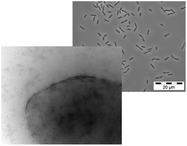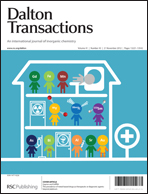Insights into the uranium(vi) speciation with Pseudomonas fluorescens on a molecular level
Abstract
Microorganisms have great potential to bind and thus transport actinides in the environment. Thus microbes indigenous to designated nuclear waste disposal sites have to be investigated regarding their interaction mechanisms with soluble actinyl ions when assessing the safety of a planned repository. This paper presents results on the pH-dependent sorption of U(VI) onto Pseudomonas fluorescens isolated from the granitic rock aquifers at Äspö Hard Rock Laboratory, Sweden. To characterize the U(VI) interaction on a molecular level,


 Please wait while we load your content...
Please wait while we load your content...